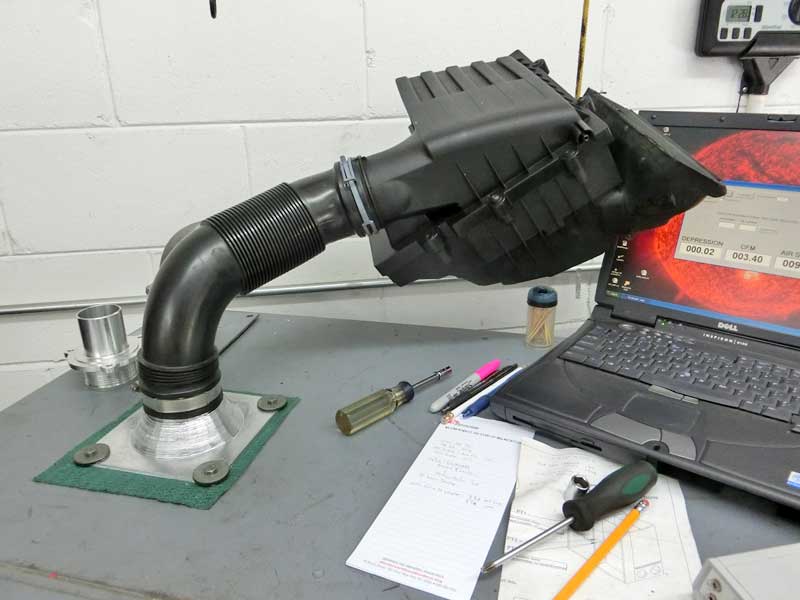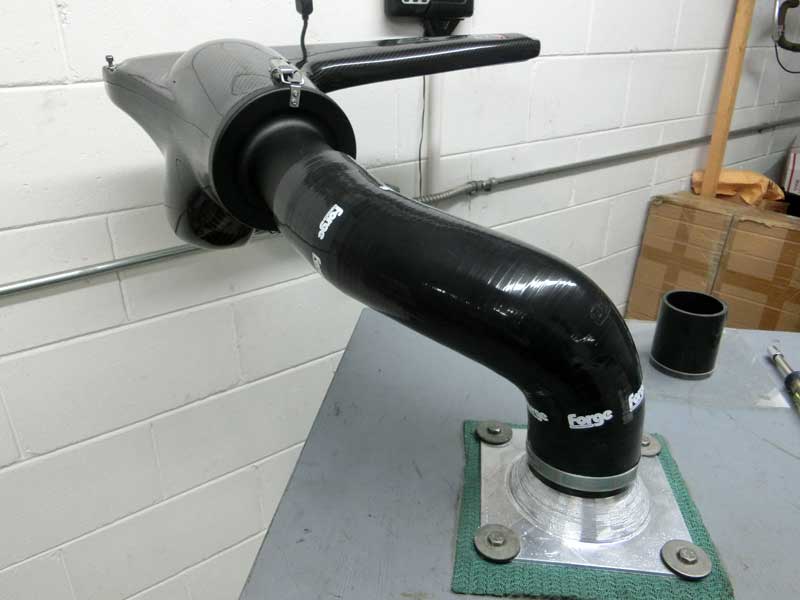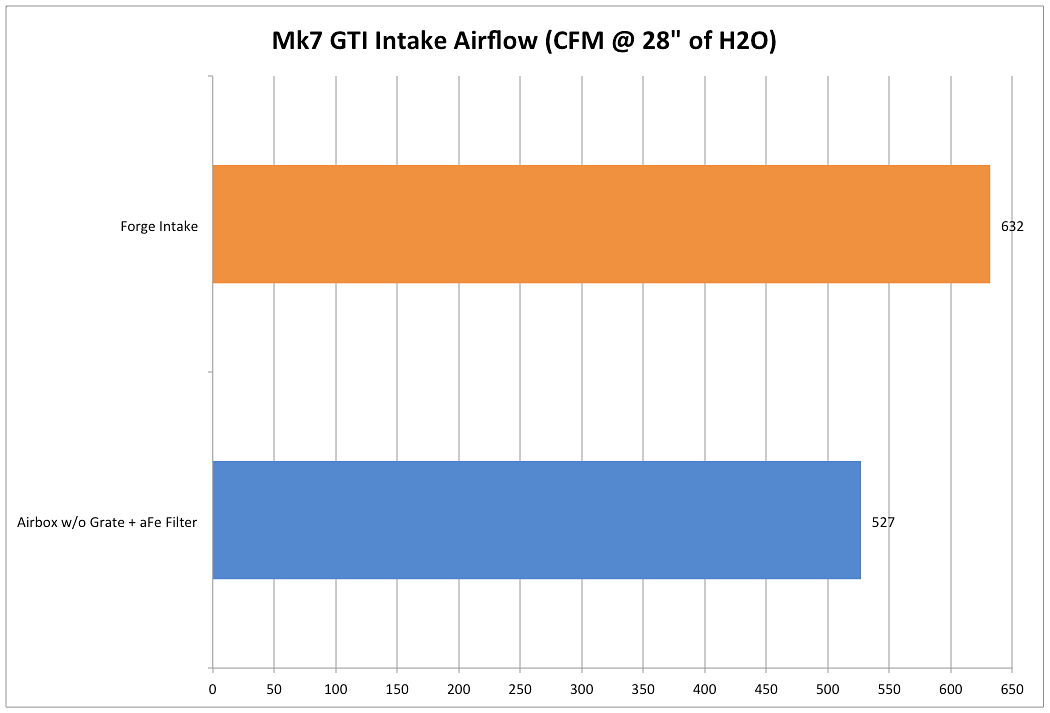This question comes up a great deal, “which air intake should I buy”. An equally common response is the cringe worthy:

Usually somewhere there is a statement that the modified stock airbox performs as well or better than aftermarket intakes.
Unfortunately this advice is lacking in details and is not correct.
The stock airbox can be modified to use an aftermarket filter, such as the aFe panel filter that I regularly test with, and by the removal of the “snow guard” grate that sits in the bottom of the airbox.

With this setup connected direct to the flow bench with the stock accordion hose the setup flows approximately 527 CFM @ 28″ of H2O.
In comparison, I recently tested the Forge Motorsport intake also connected direct to the bench using the supplied Forge hose.

The Forge intake measured approximately 632 CFM @ 28″ of H2O.
These numbers are not close to being equal as is shown on the chart.

The Forge intake allows a gain in airflow of approximately 20%, not an insignificant amount.
A notable difference between this test and how I more commonly test intakes is the absence of the Turbo Inlet Elbow and the IS20/38 compressor housing simulating adapter. I usually test with those parts because they represent a common configuration for the Mk7 GTI, but the stock size turbo inlet is not necessarily going to be used with every turbo and in situations where something larger is used, the benefit of an aftermarket intake may be significant.

What I would like to see is this setup – it’s the one many run. K&N (or whatever high-flow filter), snow guard delete, d. side opened up on the front air duct, block plate on the p. side air ducts, AND – CTS (or whatever) silicone inlet hose AND CTS (or whatever) turbo inlet pipe. This is a common set up and based on your tests and piecing it together, this should flow close to (but not as high as) the aftermarket setups.
That setup is likely to be very similar to the intake test that was done with the MST parts.
http://mygolfmk7.com/2019/09/ultimate-mk7-gti-air-intake/
The air duct at the front didn’t impose any additional restriction over the airbox once the driver side was opened up.
That is the test I typically reference in these conversations when the topic comes up – close to the aftermarket but not as high.
I believe that most people’s recommendation of stock airbox with drop in filter/snow guard removal is based on cost vs outright performance. Is 20% increase in airflow worth $300+? Maybe for some.
Most people may be thinking that way, but most of the time they don’t give their recommendation with as much detail as you have given.
100% – I’ve responded to a lot of those threads on the FB etc. and folks will often say “just do the OE mods and you have the same flow” which is not accurate based on your data. When I respond, post my video, etc. I always say that this is close to the flow of many of the aftermarket systems. I get it, believe me. It’s as stated above, you can achieve much of that flow for a low cost with the modded OE box/duct as well as a few inexpensive aftermarket parts (hose, inlet pipe).
I appreciate all your effort on these tests. Great info as always. The Forge intake does show impressive gains.
I think including a turbo inlet pipe (TIP) in the testing is the correct way of measuring each set-up.
I also think that the best bang for the buck is the stock airbox with the high flow filter, snow guard removal and the larger TIP. Your tests of these have garnered excellent results. Most TIP’s measured 30+ CFM over the stock unit. That’s a nearly 10% gain over the 361 CFM of the stock unit. I suspect a modified box with the AFe filter ($60) and a BMS TIP ($69) would likely be close to a 15% increase over stock for a fraction of the $550 retail price of the Forge unit tested.
Thanks! For a bargain setup an aFe filter and aftermarket TIP buy a lot of bang for the buck.